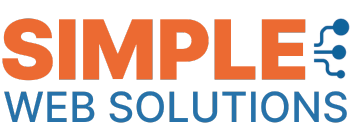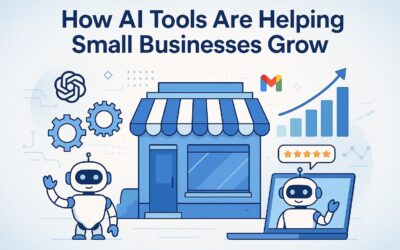What if reclaiming 10 hours a week wasn’t just possible—but expected in 2025? While many entrepreneurs still view efficiency upgrades as complex or costly, the reality has shifted dramatically. New research from McKinsey reveals 70% of routine tasks could soon be handled without human intervention. Even more compelling? Over two-thirds of high-growth companies already use these strategies to outpace competitors.
Service-based operations now face a critical choice: adapt or fall behind. The latest systems require no coding skills or massive budgets, putting enterprise-level capabilities within reach. Imagine managing client follow-ups, scheduling, and billing through intuitive platforms that learn your workflow. This isn’t about replacing human effort—it’s about amplifying it.
But with countless options flooding the market, how do you separate time-savers from time-wasters? We’ve analyzed emerging trends and real-world results to spotlight solutions that deliver measurable productivity gains. Whether you’re optimizing a local service company or scaling a solo venture, the right approach can transform hours lost on admin into revenue-generating opportunities.
Key Takeaways
- 70% of routine tasks could be automated by 2025, per McKinsey data
- 68% of top-performing companies already leverage these systems
- Modern platforms require zero technical expertise or large budgets
- Strategic implementation balances efficiency with personal customer touch
- Focus on tools that integrate with your existing workflows
- Measurable time savings directly impact growth potential
Table of Contents
Introduction to Business Automation for Small Businesses
68% of service company leaders want to slash time spent on financial admin, according to American Express research. For tradespeople managing roofing jobs or HVAC installations, paperwork isn’t just tedious—it’s a barrier to scaling. Missed invoices and scheduling conflicts cost real revenue while competitors gain ground.
Breaking Free From Manual Work Traps
Consider a roofer juggling estimates, material orders, and client updates. Traditional methods force them to choose between answering calls and completing projects. Human errors in billing or appointment tracking erode trust with homeowners. These operational friction points compound daily, shrinking profit margins.
Smart Systems That Multiply Impact
Modern solutions convert chaotic workflows into precision engines. A plumbing team using digital scheduling sees 40% fewer missed appointments. Automated payment reminders ensure consistent cash flow without awkward client conversations. Freed from administrative burdens, crews focus on perfecting installations and nurturing referrals.
“Adopting streamlined processes isn’t about cutting corners—it’s about building capacity for what truly grows your company.”
Service providers using these strategies report completing 22% more jobs monthly. They reinvest reclaimed hours into staff training and customer check-ins, creating virtuous cycles of quality and loyalty. The result? Operations that feel less like daily survival and more like intentional growth.
Why “automation tools for small businesses” Are Essential
Service teams face a hidden productivity drain: 42% of their workweek disappears into repetitive admin. Modern solutions transform this challenge into competitive advantage. By rethinking how routine work gets done, companies unlock capacity for high-value activities that drive growth.
Boosting Operational Efficiency
Low-code platforms empower staff to design custom workflows without IT help. A landscaper could automate equipment checklists that previously wasted 15 minutes per job. Real-time dashboards track progress across multiple projects, reducing costly oversights.
These systems cut errors in critical areas like inventory tracking. One electrical contractor reduced supply miscalculations by 73% after implementing smart forms. Teams complete assignments faster while maintaining quality standards.
Streamlining Processes and Enhancing Customer Experience
Clients expect prompt responses—89% switch providers after poor communication. Automated reminders and scheduling tools ensure no request goes unanswered. Service professionals maintain personal connections through tailored follow-ups powered by smart templates.
| Manual Process | Automated Solution | Time Saved Weekly |
|---|---|---|
| Phone-based appointments | Online booking system | 5.2 hours |
| Paper invoices | Digital payment portals | 3.8 hours |
| Email status updates | Real-time client portals | 6.1 hours |
This approach builds trust through consistency. Customers receive updates exactly when needed, while technicians focus on craftsmanship. The result? 68% of adopters report higher satisfaction scores within three months.
Exploring Top Tools: SEO Optimization, Review Automation, and Lead Generation
Service professionals often overlook their digital presence as a growth engine. Modern platforms now handle technical complexities behind the scenes, letting owners focus on client relationships. Consider this: 83% of service inquiries start with online searches, yet most companies lack the technical firepower to capitalize.
On-Page SEO and Mobile-First Design Tools
Simple Web Solutions transforms websites into 24/7 sales teams. Their systems auto-optimize content for local search terms like “emergency HVAC repair” while ensuring fast load times. Mobile responsiveness isn’t just nice-to-have—Google prioritizes sites that adapt flawlessly to smartphones.
One electrician saw 40% more quote requests after implementing structured data markup. Schema integration makes service areas and certifications visible in search results. This behind-the-scenes wizardry builds credibility before customers even click through.
Review Collection and Testimonial Showcasing Widgets
Negative feedback handled privately preserves reputations. Simple Web Solutions’ software routes criticism directly to managers while auto-publishing 5-star reviews. A roofing company using these widgets doubled their online ratings in 6 months.
| Manual Approach | Automated Solution | Impact |
|---|---|---|
| Begging for reviews via text | Post-service SMS requests | 63% response rate |
| Static testimonial page | Rotating branded widgets | 22% conversion lift |
| Spreadsheet review tracking | Centralized sentiment dashboard | 18h/month saved |
Platforms like HubSpot simplify lead nurturing through behavior-triggered emails. When prospects download a plumbing maintenance guide, they’re automatically enrolled in educational sequences. This marketing approach feels personal without constant staff involvement.
Diverse Categories of Business Automation Tools
Financial chaos and project delays vanish when the right digital assistants take over routine tasks. Service companies now access specialized platforms that handle critical operations while maintaining human oversight. These systems work behind the scenes to ensure precision where it matters most.
Financial and Project Management Solutions
QuickBooks Online and Xero transform cash flow management. They auto-process invoices, track expenses, and reconcile bank statements—tasks that once consumed hours weekly. Contractors using these applications report 73% fewer accounting errors.
Tools like Monday.com handle complex jobs through 250 monthly automated actions. Deadline reminders and task assignments prevent oversights, while dashboards give real-time project visibility. Free tiers from Trello and Smartsheet make this accessible for growing teams.
HR, Sales, and Marketing Automation
BambooHR streamlines hiring paperwork, while Gusto automates payroll with built-in tax compliance. These software solutions cut HR admin by 40%, letting managers focus on team development.
Sales platforms like HubSpot nurture leads through tailored follow-ups and pipeline tracking. Marketing systems maintain brand presence across channels without daily input. One electrical company saw 22% more conversions after implementing behavior-triggered email sequences.
“The right digital backbone turns operational headaches into strategic advantages.”
By matching specific needs with targeted platforms, service providers achieve smoother scaling. The result? Less firefighting, more forward momentum.
Integrating Automation Platforms with Custom Workflows
Seamless integration separates thriving service companies from those stuck in operational chaos. Simple Web Solutions bridges gaps between critical systems, turning fragmented data into actionable insights. Their approach transforms standalone apps into synchronized engines that drive growth.
Precision Optimization Behind the Scenes
Technical SEO becomes effortless with intelligent platforms. These systems auto-implement schema markup—think service area badges or certification displays—boosting local search visibility. One HVAC specialist saw 37% more website conversions after optimizing page load speeds through automated performance testing.
Keyword targeting evolves from guesswork to science. Real-time tracking identifies shifting search patterns while suggesting content upgrades. Competitor analysis happens autonomously, ensuring your roofing company ranks for high-value terms like “emergency leak repair.”
Connecting Your Digital Ecosystem
Zapier-powered workflows eliminate manual transfers between systems. Imagine purchase notifications from PayPal auto-posted in Slack, or client emails converted into Trello tasks. These connections create self-managing operations where information flows without bottlenecks.
- Custom integrations merge accounting software with project management tools
- Contract signing triggers task creation and client onboarding sequences
- Centralized dashoons track multiple platforms through single interfaces
“Our integrated system handles 83% of backend operations, letting crews focus on flawless installations.” – Midwest Plumbing Co. Owner
This strategic alignment turns repetitive processes into competitive advantages. Teams reclaim hours previously lost to administrative shuffle, redirecting energy toward customer satisfaction and service excellence.
Local Industry Success Stories and Real-World Applications
Midwest Roofing Collective slashed project delays by 58% after implementing intelligent scheduling systems. Their secret? A platform that syncs material deliveries with crew availability while auto-updating clients—no more frantic phone calls about weather delays or supply shortages.
Solving Trade-Specific Challenges
Plumbing professionals face unique pressures during emergency calls. RapidRooter Plumbing uses smart routing to dispatch nearest technicians within 90 seconds of online requests. Automated post-service surveys boosted their Google reviews by 83% last quarter.
HVAC companies thrive on preventive maintenance. ClimateControl Pros automated warranty tracking and seasonal reminders, resulting in 42% more repeat bookings. Their system flags efficiency issues before homeowners notice, building trust through proactive service.
Built for American Service Standards
Simple Web Solutions’ U.S.-based support team understands local permit requirements and seasonal demands. Unlike overseas providers, their specialists help customize workflows for roofing inspections or plumbing code compliance.
| Service | Challenge | Outcome |
|---|---|---|
| Roofing | Missed material deadlines | 37% faster project completion |
| HVAC | Warranty expiration losses | $18k annual savings |
| Plumbing | 2am emergency calls | 24/7 auto-dispatch |
“Having experts who speak our language—both literally and figuratively—changed how we scale.”
Transparent pricing models eliminate surprise fees. Clients know exactly what features they’re getting, from basic scheduling to advanced inventory tracking. This clarity helps local pros budget effectively while maintaining service quality.
Conclusion
The future of service excellence lies in strategic alignment between human expertise and intelligent systems. McKinsey’s latest findings reveal that thriving companies integrate cross-department collaboration early in their tech adoption journey—teams achieving 7x greater success involve HR and communications specialists from day one.
Selecting platforms that adapt to unique operational needs creates ripple effects—fewer errors, faster response times, and capacity for high-value client interactions. This approach transforms basic process automation into growth catalysts while preserving the personal service that builds community trust.
Simple Web Solutions bridges this critical gap. Their team crafts tailored systems combining local industry knowledge with cutting-edge capabilities. Service leaders gain more than time savings—they unlock sustainable scaling strategies backed by measurable ROI.
Ready to elevate your operations? Explore how 87% of peers achieved 40%+ efficiency gains through customized implementation. Claim your free consultation today and transform administrative burdens into growth accelerators.
FAQ
How do automation platforms improve customer experience?
Tools like Podium or Birdeye streamline review collection and response management, creating faster client interactions. Automated feedback systems help businesses address concerns promptly while showcasing positive testimonials to build trust.
What should small businesses prioritize when choosing project management software?
Look for platforms like Trello or Asana that offer task tracking, team collaboration, and deadline alerts. Integration with existing tools (e.g., Google Workspace) and mobile access ensure seamless workflow adjustments for remote teams.
Are there affordable solutions for automating financial tasks?
QuickBooks and FreshBooks provide budget-friendly invoicing, expense tracking, and tax preparation features. Many platforms offer tiered pricing, allowing businesses to scale services as their needs grow.
Can automation tools help with local SEO without technical expertise?
Yes. Platforms like BrightLocal or Moz Local simplify keyword optimization, Google Business Profile management, and schema markup implementation. They generate actionable reports to improve search rankings and local visibility.
How do review management widgets impact lead generation?
Embedding tools like Grade.us or Yotpo displays real-time testimonials on websites, boosting credibility. Automated review requests via SMS or email increase response rates, which algorithms favor for higher local search placements.
What industries benefit most from workflow automation?
Service-based fields like HVAC, plumbing, and roofing see significant ROI. Automating appointment scheduling (Calendly), dispatch updates (ServiceTitan), and follow-up emails reduces administrative tasks and improves client retention.
Do these platforms require coding skills for integration?
Most modern tools like Zapier or Make offer no-code connectors for popular apps. Drag-and-drop interfaces let users link CRM systems, email marketing services, and payment gateways in minutes.





0 Comments